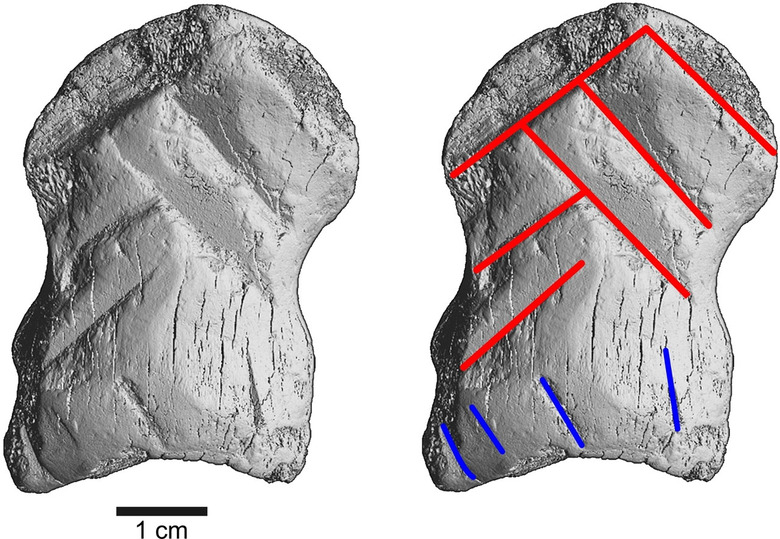Researchers Discover Bones Carved By Neanderthal Artists
One of the primitive ancient relatives to humans was the Neanderthal. Scientists have long known that Neanderthals were smart enough to fashion effective tools and weapons. Researchers have now found Neanderthals were also able to create ornaments and art. Researchers from the University of Gottingen and the Lower Saxony State Office for Heritage analyzed new findings from Unicorn Cave in the Harz Mountains.The team has concluded that Neanderthals had remarkable cognitive abilities. New excavations at Unicorn Cape had been underway since 2019. For the first time, the team has uncovered well-preserved layers of cultural artifacts from the Neanderthal period from the ruined entrance area of the cave. Among the remains discovered there was a foot bone that at first seemed to be nothing more than remains from a hunt.
Once the team removed soil sticking to the bone, they discovered an angular pattern of six notches. It was determined the marks weren't made from butchering the animal but were designed to be decorative. The 3D microscopy image of the bone can be seen below.
Researchers experimented with the foot bones of modern cattle to determine how the carving might have been made. They found the bone likely had to be boiled before it was soft enough to carve a pattern into its surface using stone tools. The work would've taken about 1.5 hours. The foot bone came from a creature called a giant dear. Carbone was dated at over 51,000 years old using radiocarbon dating technology.

The dating is the first time that anyone successfully dated an object that Neanderthals must have carved. Until this discovery, only a few ornamental objects from the time of the last Neanderthals in France had been discovered. Researchers believed those finds, dated to about 40,000 years old, were copies of pendants made by anatomically modern humans because they had already spread into parts of Europe. Researchers now believe that the creative talents of Neanderthals developed independently of modern humans. The bone discovered in Unicorn Cave is the oldest decorated object discovered in Lower Saxony. It is described as one of the most important finds from the Neanderthal period in central Europe.
